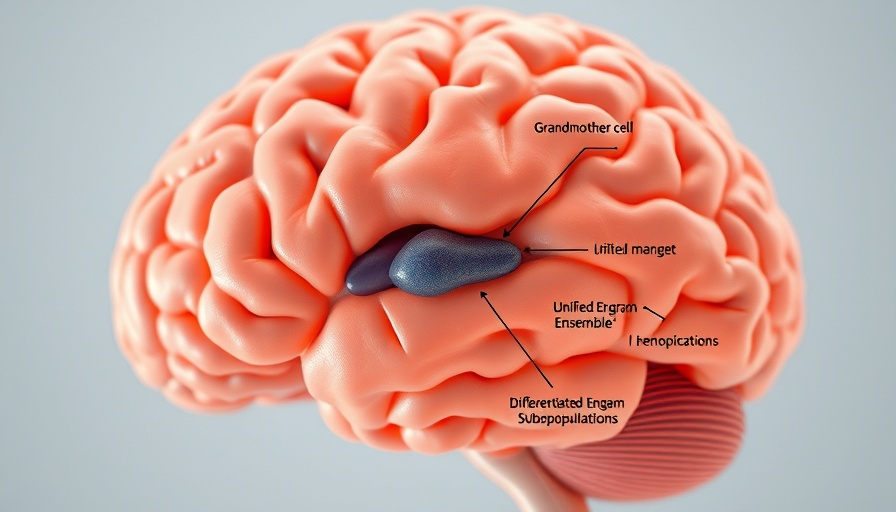
Unraveling the Intricacies of Memory: What Are Engrams?
When we think of memory, we often consider it as a simple filing system of facts and experiences neatly tucked away in our brains. But as neuroscience evolves, understanding how we store and retrieve these memories is appearing far more complex and fascinating. Memory engrams—those elusive structures representing our memories—are more than just single cells firing away; they are ensembles of neurons working in harmony (or sometimes discord!). Recent research, including a groundbreaking study by Jin et al., is shedding light on the nuanced architecture of these engram cells, potentially revolutionizing our approach to memory, health, and wellness.
The Evolution of Memory Theories
Neuroscience has long grappled with the concept of the memory engram. It can be traced back to Richard Semon, who articulated the idea over a century ago, proposing that memories cause physical changes in the brain. Fast forward to more recent times, and the infamous “grandmother cell” theory gained traction—suggesting that one neuron could represent one specific memory. It certainly sounds neat, but in practice, it fell short of explaining the complexity of our memory systems.
On the other end of the spectrum, Karl Lashley's experiments concluded that memory was distributed across the cerebral cortex, not localized. What a conundrum! This dichotomy left many questions unanswered, but the tide has finally turned thanks to modern techniques that allow us to examine these claims more robustly.
A New Perspective: Ensemble Neurons
With advancements in genetic and recording techniques, we now understand that memory is not stored by singular neurons, nor by the entire cortex, but by sparse ensembles of neurons—think of it as a well-choreographed dance rather than a solo performance. Particularly interesting is the use of c-Fos-based labeling tools, enabling researchers to identify and manipulate activated neurons during learning. This insight has allowed scientists to demonstrate that merely activating a tagged neuronal ensemble can induce or block a memory retrieval, thereby providing compelling evidence to support engram theory.
The Molecular Diversity of Engram Cells
The exciting part of Jin et al.'s study focuses on the recognition that engram cells are far from uniform. Instead, they found distinct subpopulations characterized by immediate early genes (IEGs) like c-Fos and Npas4. This depth of molecular differentiation opens up endless questions about how these various ensembles interact and what roles they play in encoding and retrieving memories.
For instance, Npas4 and c-Fos-activated neurons are often non-overlapping. It's fascinating to realize that while these groups are involved in forming memories, they can even perform opposite functions, hinting at a much richer landscape of memory encoding than previously thought.
Connections to Longevity and Holistic Wellness
Why should you care about how memories are structured? Because understanding memory can directly influence your health strategies, longevity, and overall well-being! Engrams, as the stakes of memory, hint at how we might enhance cognitive functions and wellness. Delving into the brain's inner workings can provide clues into effective biohacking techniques and wellness strategies aimed at optimizing brain functions.
Maintaining cellular health is crucial not just for your memory but also for your longevity. By focusing on how we physically encode our memories, we can explore innovative ways to strengthen our brain and body connection—supporting not only memory but your overall healthspan.
Practical Tips for Understanding and Enhancing Memory
So, how can you tap into this cutting-edge knowledge? Here are a few actionable tips:
- Cognitive Exercises: Engage in activities that promote neuroplasticity, such as puzzles, learning a new language, or playing an instrument.
- Healthy Diet Protocols: Nutrition plays a role in brain health. Incorporate anti-aging supplements and foods rich in omega-3 fatty acids and antioxidants.
- Mindfulness and Stress Reduction: Practices like meditation can improve memory consolidation by enhancing focus and reducing stress.
- Regular Physical Exercise: Physical health greatly affects cognitive function, so get moving—it's good for both body and brain!
Final Thoughts: Nurturing Memory for Longevity
In summary, as we sift through the evolving landscape of memory engrams, we uncover not only the architectural marvels of our minds but also gain insight into health and longevity practices. By embracing this knowledge, we can create personalized health strategies that optimize our cognitive functions and contribute to healthier aging. So remember, nurturing memory is more than just reminiscence—it’s a vital element in the quest for a vibrant, long-lasting life.
Ready to explore more? Visit trusted health resources, engage with current research, or consult experts to deepen your understanding and application of these findings to your daily routine!
 Add Row
Add Row  Add
Add 




Write A Comment